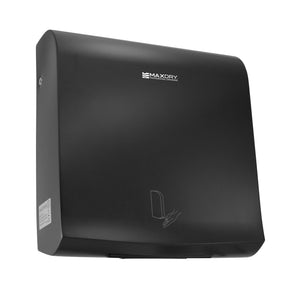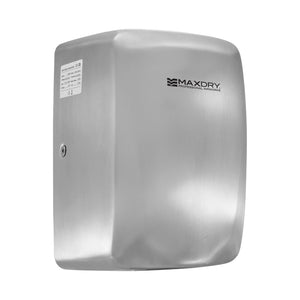Restaurant Cleaning and Disinfection Protocols
At restaurants nowadays, sanitation, hygiene, and food safety are more important than ever. Restaurant owners and managers are responsible for keeping their businesses clean, sanitised, and secure for both customers and workers. The health and safety of each customer and staff member are essential for every owner and manager.
This article will go through the cleaning and disinfection protocols that restaurants need to follow to keep everyone safe and healthy.
1.Consider Hand Hygiene
Hand hygiene is extremely important in a restaurant setting to prevent the spread of germs and bacteria that can cause illness. Proper hand washing techniques should be followed by all restaurant staff and customers, including:
- Wetting hands with clean, running water (warm or cold).
- Applying soap and lathering hands by rubbing them together for at least 20 seconds.
- Scrubbing the hands, including the backs of hands, between fingers, and under nails.
- Rinsing hands well under clean, running water.
- Drying hands with a hand dryer.
In addition to regular hand washing, sanitisation is also important. Hand sanitisers can be used as an additional measure to reduce the risk of contamination. However, hand sanitisers are not a substitute for proper hand washing, and should only be used when soap and water are not available.
Restaurants need to provide proper hand-washing facilities and encourage their staff and customers to practice good hand hygiene. Regular training and reminders about hand hygiene can help to reinforce the importance of this practice. You can even put posters inside the bathrooms to raise awareness.
2. Install High-Speed Hand Dryers
High-speed hand dryers are a popular hand-drying option in many public restrooms, including restaurants. They are a must for proper hand hygiene since after washing hands, people need to dry their hands to not spread bacteria and germs.
Advantages of High-Speed Hand Dryers
- Environmentally friendly: High-speed hand dryers eliminate the need for paper towels, which can reduce waste and help restaurants meet sustainability goals.
- Faster drying time: High-speed hand dryers can dry hands in as little as 10 seconds, which can reduce wait times in busy restrooms.
- Touchless options available: Most high-speed hand dryers are touchless, which can reduce the spread of germs and pathogens in restrooms.
- Hygiene: These hand dryers generally come with HEPA filters to remove dust and small particles from the air.
3.Clean the Area
Cleaning and disinfection protocols are essential for maintaining a clean and safe restaurant. Cleaning involves removing dirt, grime, and other debris from surfaces, while disinfection involves killing pathogens. Both cleaning and disinfection are necessary to maintain a healthy environment.
Here is a sample restaurant cleaning and disinfecting checklist that can help ensure all areas of a restaurant are cleaned and disinfected regularly:
Dining Area:
- Clean and disinfect tables and chairs between each customer.
- Clean and disinfect menus, condiment containers, and salt and pepper shakers.
- Clean and disinfect high-touch areas, such as door handles, light switches, and payment terminals.
- Sweep and mop floors.
Kitchen:
- Clean and sanitise all food contact surfaces, such as cutting boards and prep tables, between tasks and at least every four hours.
- Clean and sanitise cooking equipment, such as grills and fryers, daily or more frequently as needed.
- Clean and sanitise non-food contact surfaces, such as floors and walls, daily.
- Wash and sanitise dishes, utensils, and equipment after each use.
- Change and sanitise cutting board mats after each use.
- Check refrigerators and freezers daily and discard any expired or spoiled food.
- Clean and sanitise employee break areas.
Restrooms:
- Clean and disinfect toilets, sinks, and mirrors regularly throughout the day.
- Refill essential items, such as toilet paper and hand soap.
- Sweep and mop floors.
Other Areas:
- Clean and disinfect storage areas, such as pantries and walk-in refrigerators, at least once a week.
- Clean and disinfect trash cans and dispose of waste properly.
- Clean and disinfect all surfaces in the bar area, including taps and counter surfaces.
- Clean and disinfect any outdoor seating areas.
It's important to note that this checklist is not exhaustive and should be tailored to the specific needs of each restaurant.
4.Follow Guidelines and Regulations
To maintain health and safety standards, restaurants must comply with guidelines and regulations set by government agencies and industry organizations. The Hazard Analysis and Critical Control Points (HACCP) system is a widely recognized food safety management system that identifies and controls hazards in the food production process.
Restaurant owners and managers should stay up-to-date with the latest guidelines and regulations, and adjust their cleaning and disinfection protocols accordingly.
5.Consider Staff Hygiene and Cross-Contamination
Staff hygiene and cross-contamination are also critical factors in maintaining a clean and safe restaurant. Staff should follow proper handwashing procedures and wear appropriate protective equipment, such as gloves and masks. Additionally, staff should avoid cross-contamination by using separate equipment and utensils for raw and cooked foods.
6.Maintain Environmental Health and Sanitisation
In addition to regular cleaning and disinfection, restaurants should also maintain good environmental health and sanitisation practices. This includes maintaining proper ventilation, controlling pests, and properly storing and disposing of waste. Regular inspection is also essential since it can help restaurants identify and address areas of concern.
Maintain a healthy and safe restaurant by following these tips.
Related Products
-
ThinMAX High Speed Hand Dryer - Black Coated Stainless Steel

- Regular price
- $427.60
- Sale price
- $427.60
-
SpaceMAX High-Speed Vertical Hand Dryer, Brushed Stainless Steel (Satin)

- Regular price
- $279.50
- Sale price
- $279.50



